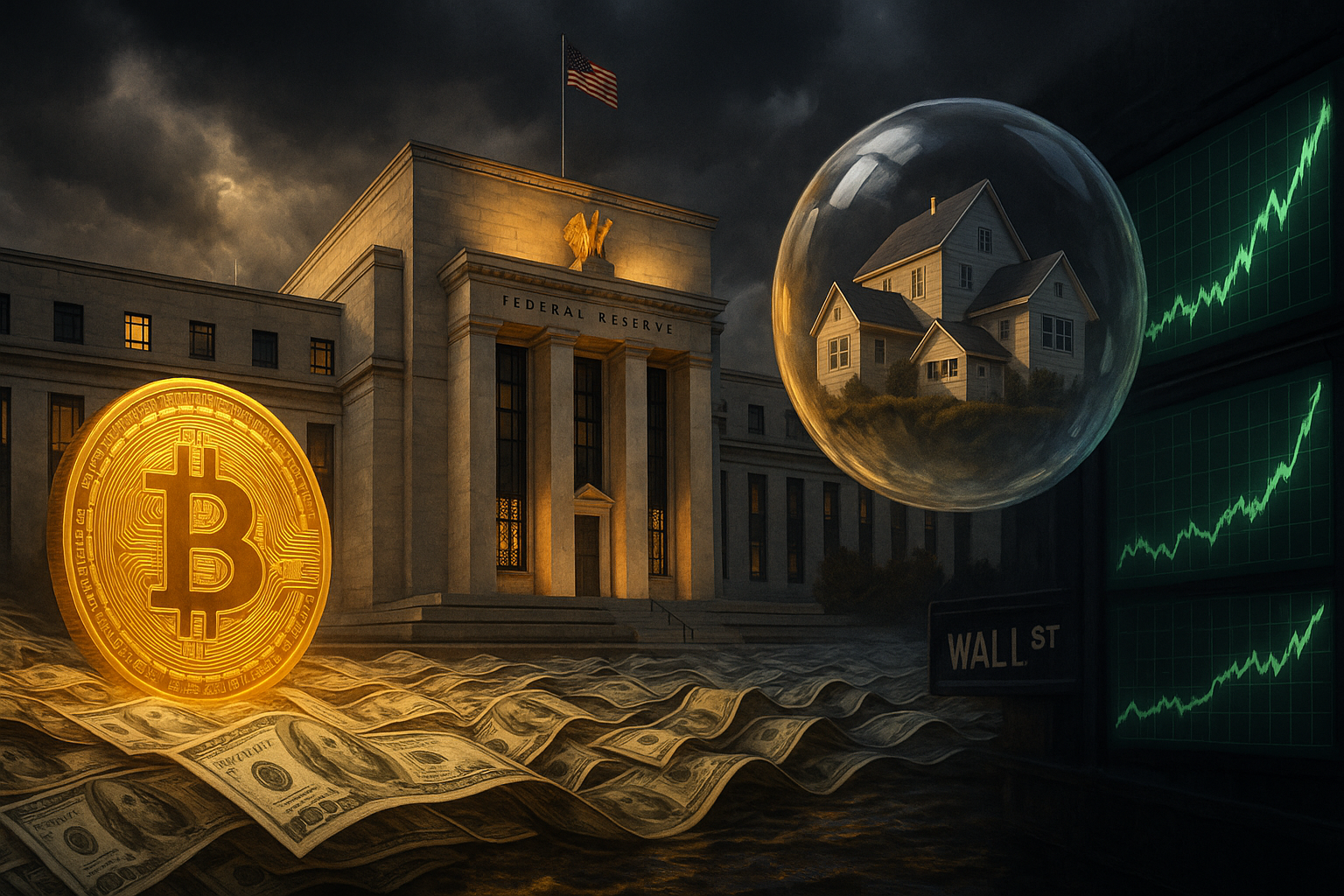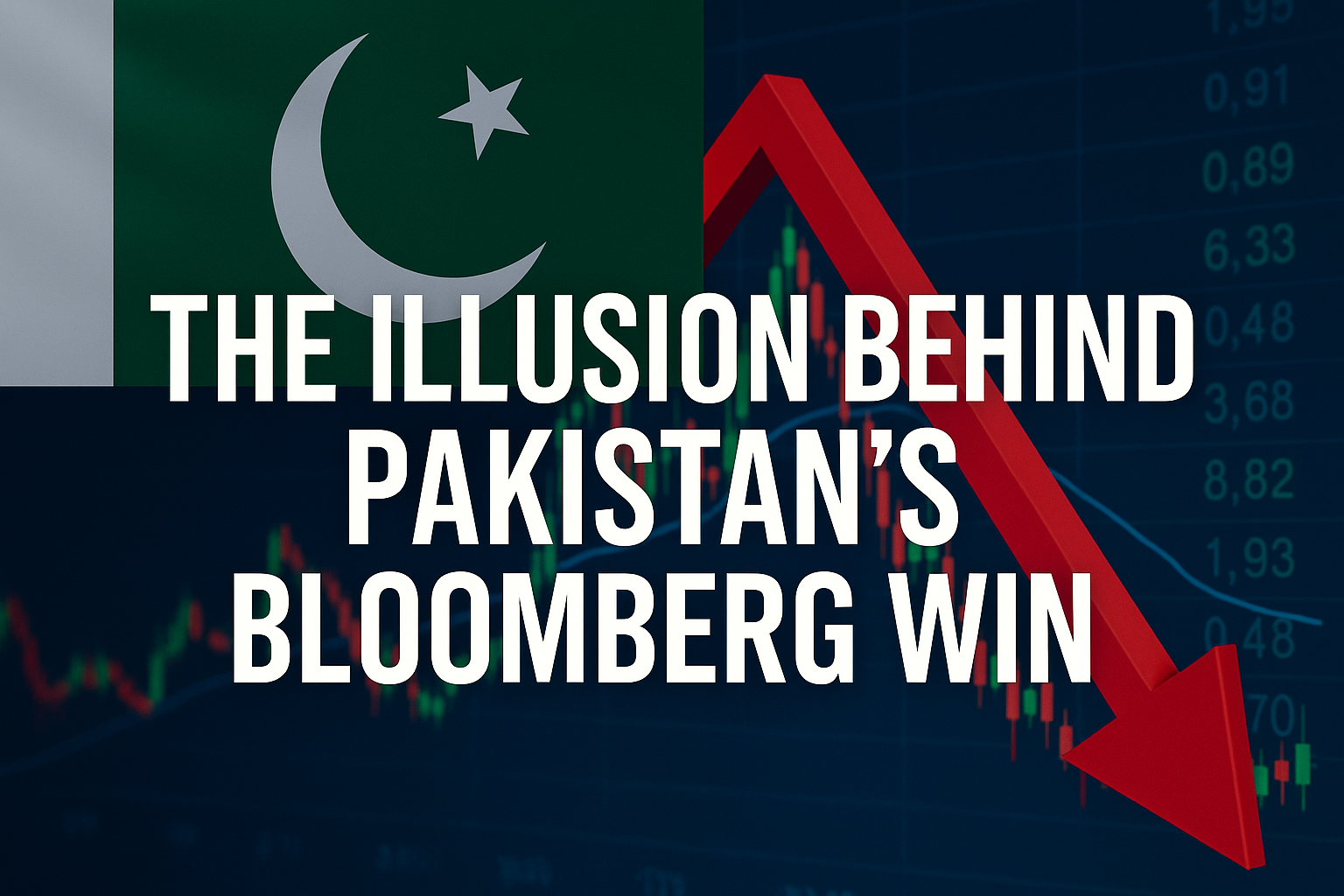Fed Rate Cut 2025: Liquidity, Bitcoin, Stocks & Bubble Risks
By: Dr. Ghulam Mohey-ud-din
Fed Rate Cut 2025: What Investors Expect
The financial markets are bracing for a pivotal decision. In October 2025, the U.S. Federal Reserve is widely expected to cut the federal funds rate by 25 basis points, lowering its target range to 3.75%–4%. While a quarter-point move may seem technical, the implications are profound. This shift is not just about easing borrowing costs—it ripples through the global liquidity cycle, the Fed’s ongoing balance sheet strategy, and the risk of asset bubbles across housing, equities, and crypto markets.
For investors, the FED rate cut 2025 is not merely a number—it’s a signal. It represents the Fed’s judgment on where the U.S. economy stands between growth, inflation, and financial stability. The outcome will set the tone for capital flows in the months ahead.
Lessons From 2020: Quantitative Easing vs. Tightening
To understand today’s dilemma, it helps to revisit 2020. At the height of the COVID-19 crisis, the Federal Reserve unleashed an unprecedented wave of quantitative easing (QE). The Fed’s balance sheet doubled in record time, ballooning from around $4 trillion to over $7 trillion in just a few months. That firehose of liquidity didn’t just stabilize credit markets—it ignited one of the most powerful bull runs in modern history.
Equities surged to record highs, and Bitcoin skyrocketed, positioning itself as a new high-beta play on liquidity. The lesson was clear: when the Fed floods the system, money finds its way into risk assets.
But the situation in 2025 looks very different. The Fed has spent the past three years in quantitative tightening (QT) mode, slowly shrinking its balance sheet by letting bonds roll off. Liquidity is being drained, not added. That raises a critical question: will easing rates without new QE be enough to fuel another rally in risk assets?
The answer depends on how investors interpret the cut. Is it a technical adjustment to fine-tune policy, or the first step in a broader pivot toward renewed accommodation?
Inflation Outlook 2025: A Stubborn Hurdle
The biggest challenge, while deciding on FED rate cut 2025, for the Fed remains inflation. While consumer prices have cooled from their 2022 highs, inflation in 2025 remains sticky around 3.8%—well above the Fed’s 2% target. For households, this means everyday costs remain elevated. For the Fed, it means any move to ease policy comes with the risk of reigniting inflationary pressures.
If the central bank cuts too aggressively, it could undermine its own credibility. Markets may interpret the shift as prioritizing growth and asset stability over price stability, which could push inflation expectations higher. That’s why some analysts argue that liquidity injections can be as much a curse as a cure. They stabilize markets in the short term but risk destabilizing prices in the long term.
Stocks at Record Highs: Bubble or Breakout?
Wall Street has already priced in optimism. The S&P 500 and Nasdaq are trading near all-time highs, boosted by strong corporate earnings and optimism around AI-driven productivity gains. On the surface, the rally seems justified.
But beneath the headlines, concerns are rising. Some analysts warn of a stock market bubble risk, pointing to stretched valuations and narrowing market breadth. Others believe the fundamentals still support higher prices, especially if lower rates ease financial conditions.
For investors, the dilemma is stark:
- Bullish case: Liquidity-sensitive sectors—like tech, growth, and small caps—could benefit from even modest rate relief.
- Bearish case: If the rally is driven more by liquidity expectations than by fundamentals, an asset bubble burst scenario could follow.
The Fed’s move will likely determine which of these paths dominates.
Housing Market 2025: Bubble Fears and Affordability Crisis
The U.S. housing market is another flashpoint linked with FED rate cut 2025. After years of rapid appreciation, home prices remain historically elevated. Affordability is at multi-decade lows, with mortgage rates still hovering above 6%. Many middle-income households are effectively locked out of ownership, intensifying the perception of a housing bubble.
A rate cut could have a double-edged effect. On one hand, it may lower borrowing costs slightly, providing relief to buyers. On the other hand, it could reignite demand in an already overheated market, driving prices further beyond fundamentals.
In other words, what helps affordability in the short run may worsen the affordability crisis in the long run.
Bitcoin and the Fed: A Correlation to Watch
Perhaps no asset has developed a closer psychological link to Fed policy than Bitcoin. Since 2020, crypto investors have treated the digital asset as a high-beta proxy for global liquidity conditions. When liquidity expands, Bitcoin rallies. When it contracts, Bitcoin corrects.
The question now is whether Bitcoin after the Fed rate cut 2025 decision will see renewed inflows. Optimists argue that even modest easing could trigger a fresh wave of speculative demand. Skeptics note that without QE, the scale of liquidity support will be limited.
Still, with Bitcoin already integrated into portfolios from retail traders to institutional allocators, the asset will likely remain a barometer of investor sentiment toward the Fed.
The Fed’s Gamble: Soft Landing or Bubble Burst?
The Federal Reserve finds itself in a classic bind. Cut too slowly, and the economy risks sliding toward recession. Cut too quickly, and the Fed risks inflating bubbles that could burst with damaging consequences.
The best-case scenario is a soft landing, where inflation continues to ease, growth remains steady, and asset markets absorb the rate cut without overheating. The worst-case scenario is a bubble-bust cycle, where risk assets surge unsustainably only to crash, forcing the Fed into even more dramatic action later.
For investors, this gamble underscores the importance of diversification and risk management while considering FED rate cut 2025. Betting entirely on one outcome—whether it’s perpetual growth or imminent collapse—may be less effective than positioning across multiple scenarios.
Final Word: All Eyes on the Fed
As markets await the official decision, suspense remains high. A 25 basis point cut may seem modest, but the signal matters more than the size. Will the Fed frame it as a cautious adjustment, or the beginning of a broader pivot?
Beyond the headline rate, the guidance on balance sheet policy and liquidity management will carry enormous weight. Because in today’s interconnected world, the Federal Reserve doesn’t just set U.S. interest rates—it reshapes the global economic map.
What are your views on Fed rate cut 2025, please share in comments!










Leave a Reply